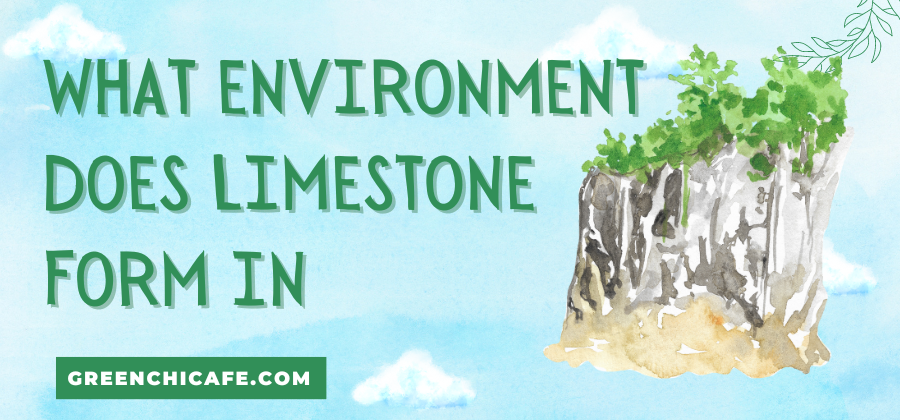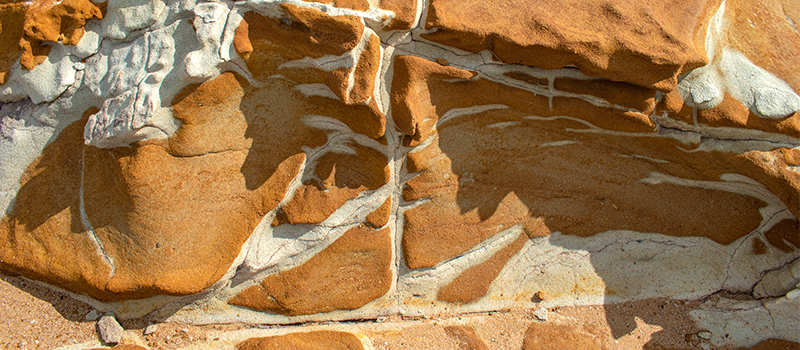Limestone is one of the most common sedimentary rocks found on Earth.
But where exactly does this rock come from and how is it created?
This article will explore the environments and processes behind limestone formation so you can gain a deeper understanding of this rock’s origins.
What Environment Does Limestone Form In?
Limestone is a sedimentary rock primarily formed in marine environments from the compaction of calcium carbonate shells and sediment.
Shallow, warm, clear waters provide ideal conditions for limestone accumulation over thousands to millions of years.
Limestone also forms in small amounts in freshwater lakes, rivers, springs, and caves.
Limestone forms primarily in warm, shallow, marine environments where calcium carbonate sediment can accumulate over long periods.
Key Points
- Limestone forms mostly in shallow marine settings over thousands to millions of years.
- Minor amounts of limestone can also develop in freshwater environments like lakes and caves.
- Warm water, calm conditions, and high sea levels facilitate limestone formation.
What Other Factors Contribute to Limestone Formation?
Beyond the calcium-rich waters, a few additional environmental factors facilitate limestone accumulation:
- Temperature – Warm water enables prolific calcareous organism growth
- Water Energy – Calm waters allow fine sediment accumulation
- Sea Level – High sea levels spread marine environments inland
- Subsidence – Gradual sinking increases water depths for carbonate deposition
When these conditions are met, the resulting environment tends to produce widespread limestone bed formation over geologic timescales.
How Does Limestone Texture Relate to the Depositional Environment?
The texture and composition of limestone strongly reflect its original depositional environment.
Here are some examples:
- Oolitic limestone – Formed in warm, agitated, shallow waters from precipitated calcium carbonate granules called ooliths. This gives the rock a distinctive sandy texture.
- Chalk – Formed in deep marine conditions from planktonic coccoliths and foraminifera. Chalk has an extremely fine texture.
- Coquina – Formed from fragmented shells in high-energy beach environments. Coquina limestones are poorly cemented.
- Fossiliferous limestone – Contains high amounts of recognizable fossils and shell fragments, indicating marine deposition.
As you can see, a limestone’s characteristics provide clues about the conditions present during its formation millions of years ago.
What Non-Carbonate Components Can Be Present in Limestone?
While limestone is primarily composed of calcium carbonate, it may also include minor amounts of other minerals like quartz, chert, or clay.
These additional components are incorporated from terrestrial sources as rivers deliver sediments into marine basins.
Shales and sandstones are sometimes interbedded within limestone formations as well.
These non-carbonate layers reflect cyclic depositional changes or local terrestrial sediment inputs.
The presence of non-carbonate minerals creates impure limestones.
How Do Caves Form in Limestone?
Caves frequently form within limestone rock, creating unique subterranean landscapes.
Rainwater and surface streams become weakly acidic as they absorb carbon dioxide from the air and soil.
This dilute acid slowly dissolves the calcium carbonate in limestone as it percolates through cracks, joints, and bedding planes.
Over thousands of years, this steady erosion process carves out caves, passages, sinkholes, and other karst features characteristic of soluble limestone terrains.
Stalactites, stalagmites, and flowstones develop in caves from dripping calcium-saturated waters.
What Other Interesting Facts Should You Know About Limestone?
- Limestone comprises around 10% of all sedimentary rock worldwide
- Pure limestones are white, but impurities add colors like red, yellow, or gray
- Limestone reacts vigorously with hydrochloric acid by fizzing
- Limestone landscapes often lack surface streams due to subsurface drainage
- ‘Micrite’ refers to microscopic calcium carbonate mud composing limestone
- Limestone is an economically valuable rock used for cement, aggregate, building stone, and more
Where Is Limestone Commonly Found?
Limestone is one of the most abundant sedimentary rocks, accounting for around 10% of all sedimentary deposits worldwide.
It is widespread and can be found on every continent on Earth.
Some regions known for their extensive limestone deposits include the Caribbean islands, the Florida Keys, Italy, Australia’s Nullarbor Plain, and the White Cliffs of Dover in England.
Limestone also underlies much of the Midwest United States as well as large areas of central Asia.
Additionally, there are substantial limestone deposits located in Russia, China, the Middle East, Mexico, Brazil, and countries in Northern Africa.
Limestone forms thick deposits along passive plate margins where conditions favor carbonate accumulation.
The rock accumulates both on continental shelves and in the deep ocean at the base of continental slopes in the form of calcareous ooze.
Overall, limestone is ubiquitous and makes up a significant portion of exposed sedimentary rock worldwide.
Does Limestone Form in Warm or Cold Water?
Limestone predominantly forms in warm, shallow marine waters no deeper than a few hundred feet.
Warm waters between 20-30°C provide ideal conditions for prolific limestone accumulation over time.
The warm temperatures enable calcareous organisms like shellfish, coral, calcareous algae, and plankton to thrive and produce abundant calcium carbonate sediment.
Cold water temperatures restrict the diversity and productivity of these organism communities.
However, some limestone can form in colder waters if adequate calcium and carbonate ions are present to facilitate chemical precipitation.
But the majority of global limestone deposits originated in warm, tropical to subtropical marine environments based on the ancient latitudes and climates at the time of deposition.
Water temperature exerts strong control over the rate of limestone formation.
Warm, shallow epicontinental and inland seas produce the most extensive limestone accumulations over geologic timescales.
How Do National Parks Help the Environment?
National parks provide numerous benefits to the environment.
They protect biodiversity by preserving habitats and ecosystems in their natural state.
Hunting, logging, mining, and other exploitive activities are prohibited, enabling wildlife to thrive.
National parks also help regulate local climate and weather patterns and provide clean water resources.
They absorb carbon emissions through large swaths of protected forests.
National parks facilitate important ecological research and allow the public to connect with nature.
They anchor larger conservation efforts, provide corridors for animal migration, aid in species recovery and sustain overall ecosystem health through preservation.
Additionally, national parks protect geological features, landforms, and scenic wilderness while promoting sustainable recreation.
Overall, national parks play a vital role in environmental conservation in the U.S. and worldwide.
In Summary
The primary origins of limestone lie in warm, shallow marine environments where calcium carbonate sediment can accumulate and consolidate over time.
Factors like texture, fossils, and cave formations all provide clues into the depositional conditions that created a particular limestone deposit millions of years ago.
I hope this overview gives you a good understanding of the main processes behind limestone formation as well as some key facts about this extremely common sedimentary rock type.
Frequently Asked Questions About Limestone Formation
What Is The Role Of Organisms In Limestone Formation?
Marine organisms like coral, shellfish, and plankton produce calcium carbonate shells and skeletal material. When these organisms die, their calcareous remains accumulate as sediment on the seafloor. These calcium carbonate sediments eventually lithify into solid limestone rock.
How Long Does It Take For A Limestone To Form?
Most limestones take thousands to millions of years to fully form and lithify through gradual sedimentation and compaction processes. Substantial limestone deposits can range from 10 feet to over 1,000 feet in thickness.
What Colour Is Limestone?
Pure limestones are white. However, impurities like clay, sand, iron oxide, or organic material can add different colors like red, yellow, gray, brown, or black to limestone. These colored bands or mottles reflect changes in depositional conditions.
Can Limestone Form On Land?
While uncommon, minor limestone deposits can form in caves, lakes, rivers, and springs on land through direct precipitation of calcium carbonate from supersaturated waters. However, large accumulations of marine limestone dominate worldwide.
At GreenChiCafe, we are passionate about sharing knowledge that can benefit our environment. We hope this article provided useful information about the origins of limestone rock and the environments in which it forms. Check out our website for more great content on geology, ecology, sustainability, and our amazing planet!

Annie is a passionate environmental writer and activist. She has been writing about sustainability, conservation, and green living for over 15+ years. Annie is dedicated to raising awareness about environmental issues and providing practical tips for living an eco-friendly lifestyle. When she’s not writing, you can find her volunteering with local environmental organizations, teaching workshops on zero waste living, or exploring nature. Feel free to get in touch with Annie: annie@greenchicafe.com


